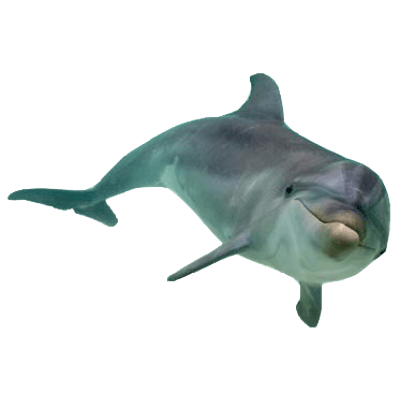Synopsis of Oceanography & Marine Biology
|

|
Synopsis of Oceanography & Marine Biology
|

|
- 384-327 B.C. – Aristotle
Aristotle and other early Greek philosopher-naturalists made a number of observations about plants and animals, including those of the seashore.
- 1815-1854 – Edward Forbes
A British naturalist, Forbes is considered by many to be the founder of the science of Oceanography and Marine Biology. Unfortunately he is also best known for his “azoic theory”, which stated that marine life did not exist on sea beds at depths over 300 fathoms (1,800 feet). This was soon to be disproved.
- 1828 – Early Plankton studies
A surgeon and amateur naturalist, J. Vaughan Thomson collected and studied marine plankton off the Irish coast and was the first to describe the planktonic stages of crabs.
- 1831-1836 – The Beagle Expedition
The British naturalist Charles Darwin collected and studied numerous marine organisms during this famous voyage, which lead to his famous subsidence theory of coral reef formation (for atolls) and a classification of barnacles as well as the theory of evolution and many other works.
- 1847 – Diatoms identified as plants
Joseph Hooker realized that planktonic diatoms were plants and suggested that they play the same ecological role in the sea that green plants do on land.
- 1872 – Statzione Zoologica de Napoli established
The German zoologist Anton Dohrn established this early marine biological station, which was among the first to routinely accept visiting scientists from other countries.
- 1872-1876 – Challenger Expedition
The first oceanographic expedition to circumnavigate the world, it traveled to all the major oceans except the Arctic. Usually considered the first “modern” Oceanographic expedition because it standardized methods to collect data and investigated aspects of Physics, Chemistry, Biology and Geology. The final report consisted of more than 50 volumes and established the existence of life at extreme depths.
- 1873 – First Marine Biological Laboratory in the United States established
Luis Agassiz established the Anderson school in Penikese, the first Marine Biological Laboratory in America. It was later to evolve into the Marine Biological Lab at Wood’s Hole.
- 1873 – Early textbook in Oceanography
Charles Wyville Thomson, A professor of natural philosophy at the University of Edinburgh, published one of the first textbooks in Oceanography The Depths of the Sea
- 1877-1886 – Blake Expedition
Collections were made in the Caribbean and Gulf of Mexico by dredging.
- 1886-1922 – Expeditions Princess Alice I and II, Hirondelle I and II
A series of expeditions that made many deep-sea collections.
- 1887-1925 – Albatross Expeditions
This expedition made numerous collections in the Pacific and Indian Oceans.
- 1888 – Marine Biological Laboratory (MBL) at Woods Hole established
MBL began operation (incorporated on March 20, 1988) with 2 instructors, 8 students and 7 investigators.
- 1888 – A marine biological laboratory established in Plymouth, England
This laboratory was established by the Marine Biological Association of the United Kingdom.
- 1889 – National Expedition
This expedition made a variety of plankton collections.
- 1898-1899 – Valdivia expedition
Made many deep-sea collections and studied the vertical distribution of pelagic organisms.
- 1902 – The International Council for the Exploration of the Sea (ICES) established
The ICES was established by King Oscar II of Sweden.
- 1904-1913 – Michael Sars Expedition
This expedition made many collections from the North Atlantic.
- 1906 – Oceanographic museum and Aquarium in Monaco established
An avid student of marine science, Prince Albert I of Monaco established this museum and Aquarium for his collections from his research expeditions.
- 1921-1936 – Dana I and II Expeditions
Made deep-water collections from around the world, also conducted fisheries research.
- 1924 – The Scripp’s Institution of Oceanography established
Scripp’s was established in La Jolla, California, derived from a research organization founded in 1905 by William Ritter, a student of Alexander Agassiz.
- 1925-1938 – Meteor Expeditions
Biological studies of the southern Atlantic and the ecology of the Antarctic.
- 1934 – Bathysphere descent
Zoologists William Beebe and Otis Barton were the first to observe relatively deep-sea habitats directly aboard the “bathysphere”, which remained tethered to the surface ship during the entire dive. They reached a depth of 923 meters/3,072 feet.
- 1950-1952 – Galathea Expedition
Made deep-water collections from around the world (up to 10 kilometers in depth).
- 1957-1960 – Vitiaz Expedition
This expedition focused on the biology of deep-sea trenches.
- 1960 – Trieste bathyscaphe dive
A United States and Swiss team made the deepest manned dive (to 10,916 meters depth/6.78 miles) in the Marianna Trench.
- 1977 – Discovery of Deep-sea thermal vents
The manned submersible Alvin discovered the existence of unique communities of organisms around deep-sea thermal vents.
|
|